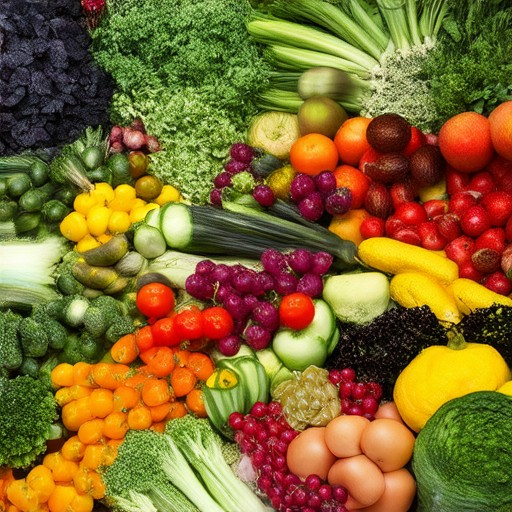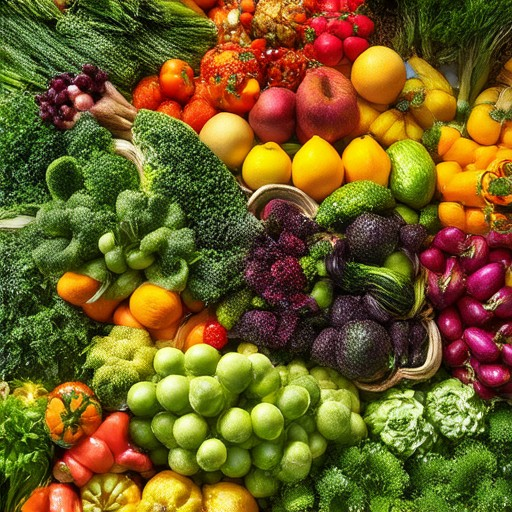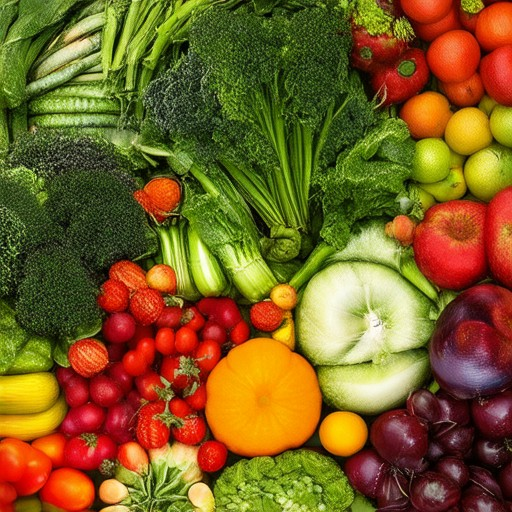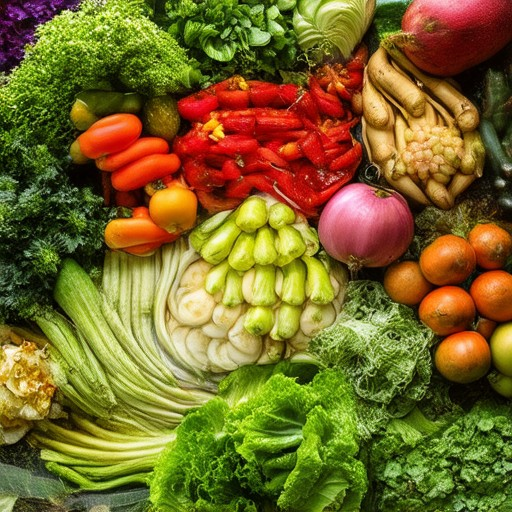Discover the artful synergy between wines and garden-fresh vegetables as we unlock the perfect wine and garden pairing guide. Whether you’re a seasoned wine enthusiast or a gardening novice, the allure of combining robust reds with crisp greens or aromatic whites with earthy roots offers a delightful sensory experience. This guide delves into the intricate dance of flavors, textures, and aromas that elevate both the wine and the garden vegetables, creating a harmonious balance that delights the palate. From exploring the historical roots of such pairings to mastering the best practices for achieving memorable combinations, this article is your ultimate resource for crafting unforgettable wine and garden vegetable pairings. Dive in and embark on a journey to elevate your culinary experiences through the timeless art of wine and garden pairings.
Key Takeaways
– Understand wine profiles to maximize flavor matches between wines and garden vegetables.
– Match veggies with wines that share similar taste notes for enhanced compatibility.
– Consider complementary flavors, textures, and cooking methods when pairing wines with vegetables.
– Explore specific wine-vegetable combinations like tomatoes with Chardonnay or spinach with Syrah.
– Experiment and trust your palate to discover unique and delicious pairings.

What Makes a Great Wine and Garden Vegetable Pairing?
Pairing wine with garden-fresh vegetables can be a delightful experience, but achieving the perfect match requires thoughtful consideration of flavor profiles, textures, and seasonal availability. Here are some expert tips to help you create memorable combinations:
- Red Wines with Bold Vegetables: Rich, full-bodied reds like Merlot and Cabernet Sauvignon pair beautifully with hearty vegetables such as tomatoes, eggplant, and bell peppers. The robust tannins in these wines complement the earthiness of these veggies, creating a harmonious balance.
- Crisp Whites for Fresh Vegetables: Light and aromatic white wines like Riesling or Chardonnay are excellent companions for crisp, watery vegetables like zucchini, cucumbers, and snap peas. Their citrusy acidity cuts through the freshness of these garden staples, enhancing the overall dining experience.
- Herbs and Earthy Wines: Herbs such as basil, thyme, and rosemary add a unique dimension to vegetable dishes. These herbs pair exceptionally well with Pinot Noir , whose earthy and slightly spicy profile mirrors the complexity of herb-infused recipes. Try pairing this wine with roasted root vegetables like carrots, beets, and parsnips for a truly satisfying meal.
- Seasonal Delights: Take advantage of seasonal produce to create fresh and vibrant pairings. In summer, try pairing Sangiovese with ripe tomatoes and fresh basil for a Caprese-inspired dish. In autumn, consider Malbec with butternut squash and sage for a warm, comforting meal.
Best Wine and Garden Vegetable Pairings
Pairing wines with garden-fresh vegetables can elevate your meals to new heights. Here’s a curated guide to complementary wine and vegetable pairings, crafted to delight your senses and impress your guests.
- Tomatoes – A classic choice is a bold red wine like Cabernet Sauvignon or Merlot. These wines complement the acidity and richness of tomatoes in salads or sauces.
- Zucchini – Opt for a light, crisp white wine such as Sauvignon Blanc or Pinot Grigio. Their refreshing qualities balance zucchini’s mild flavor in dishes like grilled zucchini slices.
- Spinach – Pair with a medium-bodied red wine like Syrah or Côtes-du-Rhône. Spinach’s earthy notes pair beautifully with these wines, especially in recipes like spinach and feta stuffed pasta.
- Asparagus – A Chardonnay or Riesling is an excellent match. Asparagus’s high acidity pairs well with these wines, complementing their fruitiness in dishes like grilled asparagus with lemon butter.
- Bell Peppers – Try a spicy Shiraz or Zinfandel. These wines mirror the heat and complexity of bell peppers, making them a great match for roasted pepper dishes.
- Eggplant – A full-bodied red wine like Sangiovese or Brunello di Montalcino enhances the smoky, umami flavors of eggplant, particularly in dishes like Eggplant Parmesan.
- Arugula – Light and peppery Arugula pairs well with a crisp Prosecco or Pinot Noir. These wines cut through the greens’ assertive flavor, leaving a clean finish.
- Squash – A dry Riesling or Gewürztraminer is ideal for butternut or acorn squash. These wines complement the sweet, nutty flavors in baked squash dishes.
For more expert insights into wine pairings, explore our wine tasting guides and discover the perfect matches for your garden harvest. Elevate your culinary experiences with Fine Vines!

What Are the Top Wine and Garden Pairings to Enhance Your Dining Experience?
To elevate your dining experience, pair your favorite wines with thoughtfully selected garden-fresh dishes. Here’s a guide to the best combinations that bring out the flavors of both the wine and the food:
- Sparkling Wines with Fresh Salads
- Pairing: Champagne or Prosecco with mixed greens, cucumbers, and cherry tomatoes.
- Why It Works: The effervescence of the wine complements the crispness of fresh vegetables, creating a refreshing taste.
- Red Wines with Grilled Meats
- Pairing: Cabernet Sauvignon or Merlot with grilled steak, lamb chops, or pork tenderloin.
- Why It Works: The rich, bold flavors of red wines match perfectly with the smoky and juicy textures of grilled meats.
- White Wines with Light Dishes
- Pairing: Chardonnay or Pinot Grigio with garden-fresh salads, chicken breast, or fish.
- Why It Works: These wines offer a clean acidity that enhances the brightness of fresh ingredients and light proteins.
- Rosé Wines with Seasonal Ingredients
- Pairing: Rosé wines pair beautifully with summer fruits like strawberries, peaches, or melons.
- Why It Works: Their subtle sweetness and fruitiness make them ideal for highlighting the natural flavors of ripe, garden-grown fruits.
- Dessert Wines with Sweet Dishes
- Pairing: Sauternes or Port with chocolate mousse, tiramisu, or berry-based desserts.
- Why It Works: These rich, sweet wines complement the indulgence of dessert courses, adding a luxurious touch to the meal.
- Garden-Fresh Herbs and Spices with Wines
- Pairing: Use herbs like thyme, rosemary, or basil from your garden to season dishes that accompany red wines.
- Why It Works: Fresh herbs enhance the aroma and flavor of meals, creating a more vibrant dining experience.
For the best results, consider the seasonality of your ingredients and the occasion. Fine Vines offers expert tips on wine selection and pairing, along with resources to explore these combinations further: Fine Vines .

Best Wine and Garden Pairings
Wine and garden pairings can elevate your outdoor gatherings to unforgettable experiences. Whether you’re hosting a casual picnic, a sunset dinner, or a formal garden party, the right wine selection can complement the ambiance and enhance flavors. Here’s a curated guide to perfect pairings:
- Sparkling Wines for Celebrations :
- Champagne or Prosecco : Ideal for milestone celebrations or garden parties, these bubbly wines pair well with canapés, fresh fruits, and light appetizers. Their effervescence adds a festive touch to any event.
- Red Wines for Robust Flavors :
- Cabernet Sauvignon : A classic choice for grilled meats, hearty stews, and robust cheeses. Its rich tannins complement earthy, savory dishes.
- Merlot : Known for its smooth texture, Merlot pairs beautifully with lamb, pork, and tomato-based dishes.
- Syrah (Shiraz) : A bold red wine that stands up to spicy, smoky, or charcuterie-filled spreads.
- White Wines for Delicate Dishes :
- Chardonnay : A versatile white wine that complements seafood, chicken, and creamy desserts. Its buttery notes pair perfectly with garden-fresh salads.
- Pinot Grigio : Light and crisp, it’s ideal for spring and summer gatherings, pairing well with delicate whites and herbal dishes.
- Riesling : A refreshing option for sweet and sour dishes, such as fruit salads or citrus-infused meals.
- Rosé Wines for Versatility :
- Grapefruit Sparkling Rosé : A perfect match for garden-fresh salads, ceviche, or light pasta dishes.
- Côtes du Rhône Rosé : Offers a balanced acidity that complements grilled vegetables, tapas, and mild cheeses.
- Seasonal Pairings :
- Spring Gardens : Opt for lighter, aromatic wines like Pinot Noir or Grüner Veltliner to complement fresh herbs and early-season produce.
- Summer Barbecues : Try Zinfandel or Beaujolais for their bold fruit flavors that stand up to grilled meats and smoky BBQ fare.
- Fall Harvests : Pair full-bodied reds like Cabernet Sauvignon or Chianti with roasted pumpkins, squash, and hearty stews.
- Winter Gatherings : Bold reds like Bordeaux blends or Syrah are perfect for warm soups, roasted meats, and game dishes.
By thoughtfully selecting wines based on the season, cuisine, and setting, you can create a memorable dining experience that resonates with your guests and the beauty of your garden.
How to Create the Perfect Wine and Garden Vegetable Pairing
To craft the ideal wine and garden vegetable pairing, consider the following structured approach:
Understanding Wine Profiles
Wines are categorized into four primary types, each offering distinct characteristics:
- Red Wines : Known for bold tannins and rich fruit flavors, such as Cabernet Sauvignon, Merlot, and Syrah.
- White Wines : Typically crisp and acidic, with examples like Chardonnay, Sauvignon Blanc, and Riesling.
- Sparkling Wines : Offer effervescence and acidity, ideal for celebratory occasions, with Champagne and Prosecco being popular choices.
- Rosé Wines : Combine red fruit flavors with a crisp finish, making them versatile for various dishes.
Vegetable Flavor Profiles
Garden vegetables vary in taste and texture, each complementing wines differently:
- Acidic Vegetables : Tomatoes, bell peppers, and broccoli pair well with acidic whites.
- Mild and Versatile Vegetables : Zucchini, cucumber, and lettuce complement light whites.
- Earthy Vegetables : Carrots, beets, and potatoes pair with robust reds.
- Sweet Vegetables : Sweet corn, butternut squash, and zucchini match well with full-bodied reds or sweet wines.
Strategies for Successful Pairings
When pairing wines with vegetables, consider:
- Complementary Flavors : Match wines with vegetables sharing similar flavor notes, such as tomatoes with Chardonnay.
- Textural Considerations : Creamy textures may benefit from wines with buttery or acidic properties, like Chardonnay or Burgundy.
- Cooking Methods : Roasted vegetables pair well with richer wines, while sautéed vegetables offer versatility.
- Herbs and Spices : Use herbs like thyme or rosemary for grilled vegetables, complementing wines with herbal notes. Spicy vegetables may pair well with peppery wines like Riesling.
Specific Pairing Recommendations
- Robust Red Wines : Pair with hearty vegetables like roasted beetroot (Cabernet Sauvignon) or eggplant (Merlot).
- Light Whites : Optimal for mild vegetables like steamed asparagus (Pinot Gris) or fresh spinach (Sancerre).
- Sparkling Wines : Ideal for crisp, refreshing vegetables like cucumber (Prosecco) or radishes (Brut Sparkling).
- Full-Bodied Reds : Suitable for starchy vegetables like potatoes (Cabernet Sauvignon) or sweet corn (Château Neuf-du-Pape).
Tips for Experimentation
- Taste Test : Sample both wine and vegetables to gauge compatibility.
- Keep It Simple : Begin with classic pairings and explore more adventurous combinations.
- Trust Your Palate : Everyone’s preferences differ, so experiment to find what suits you best.
By considering flavor profiles, textures, and personal preferences, you can craft meals that delight the senses. Remember, the key is to enjoy the process and let your taste buds guide your choices.

Wine and Garden Vegetable Pairings
Pairing wines with garden vegetables can elevate both the flavor of the food and the drink. Here are some expert-recommended combinations that bring out the best in both:
- Tomatoes & Chardonnay : The bright acidity of tomatoes pairs perfectly with the citrus notes in Chardonnay, enhancing the fruitiness of both.
- Spinach & Syrah : The earthy flavors of spinach complement the bold, peppery notes of Syrah, creating a harmonious balance.
- Peas & Pinot Grigio : The crisp, clean taste of peas matches well with the light, floral characteristics of Pinot Grigio.
- Basil & Pinot Noir : The fresh, herbal aroma of basil pairs beautifully with the smoky, tannic profile of Pinot Noir.
- Thyme & Cabernet Sauvignon : The woody, pine-like notes of thyme align perfectly with the rich, full-bodied nature of Cabernet Sauvignon.
- Rosemary & Gewürztraminer : The spicy, floral qualities of rosemary enhance the aromatic complexity of Gewürztraminer.
- Arugula & Prosecco : The peppery bite of arugula cuts through the effervescent bubbles of Prosecco, creating a lively contrast.
- Kale & Malbec : The earthy, slightly bitter notes of kale pair well with the dark fruit and spice of Malbec.
- Swiss Chard & Chianti : The sweet, tangy notes of Swiss chard complement the cherry and leather characteristics of Chianti.
- Strawberries & Moscato : The sweet, juicy strawberries match the fruity, semi-sweet profile of Moscato.
- Raspberries & Merlot : The jammy, velvety raspberries pair seamlessly with the plush, berry-driven Merlot.
- Blackberries & Cabernet Franc : The ripe, blackberry fruitiness of the wine mirrors the fruit in the berries, creating a delightful match.
- Lavender & Sancerre : The delicate floral notes of lavender add complexity to the mineral-driven Sancerre.
- Fennel & Grüner Veltliner : The anise and licorice notes of fennel complement the herbal, slightly spicy character of Grüner Veltliner.
These pairings highlight how certain vegetables and wines share complementary flavor profiles, enhancing both the culinary experience and the beverage’s nuances. Experimenting with these combinations can lead to exciting discoveries in the kitchen and beyond.



0 Comments